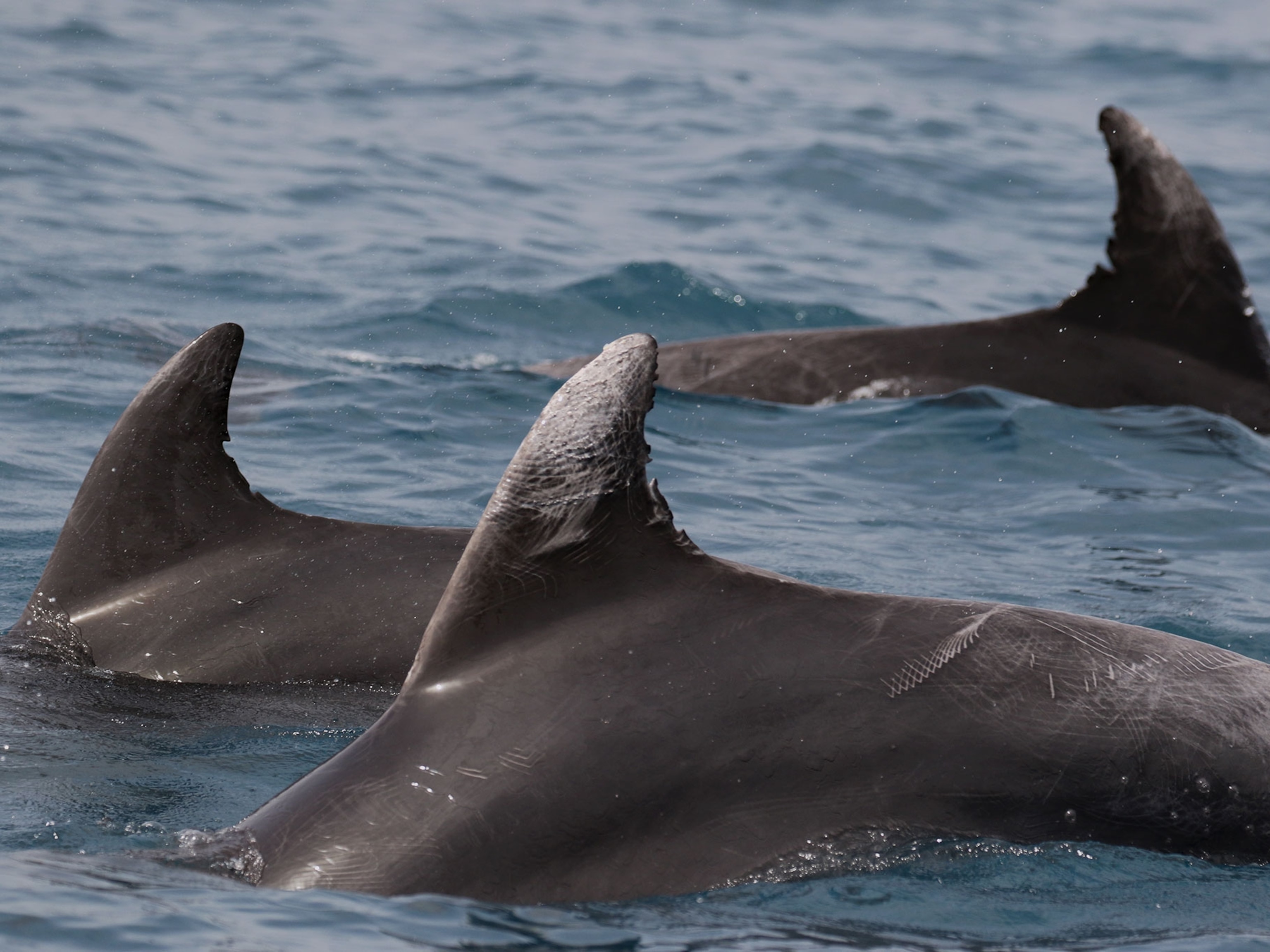
Mystery Solved: How Do Dolphins Swim So Fast?
Researchers have finally figured out how dolphins swim as fast as they do.
Believe it or not, how dolphins can swim so fast has been something of a riddle for researchers since the 1930s.
But a new study has laid to rest one of the most vexing questions plaguing scientists about dolphin speed: How can their muscles produce enough thrust for such high speeds?
"It's been controversial for a while," said Frank Fish, a marine biologist at West Chester University in Pennsylvania.
Now he has the answer: Bottlenose dolphins can produce the power they need to swim circles around whatever they wish by using their powerful tails, new experiments show.
The paradox began in 1936 with a British researcher named Sir James Gray, who conducted the first study on dolphin swimming, said Fish, a co-author of the study published online January 15 in the Journal of Experimental Biology.
Gray had observed a dolphin swimming around a ship at 33 feet (10 meters) per second for seven seconds, and wondered how the animal could move so quickly. (See National Geographic's videos of dolphins and porpoises.)
Physics theory states that for something the size of a dolphin—and for the speed with which it travels through the ocean—water flow over the animal should be turbulent rather than smooth, Fish said. That turbulent flow creates a lot more drag that needs to be overcome than smooth flow does.
But when Gray input his variables into his equations and assumed a turbulent flow, "he found the animal didn't have enough muscle mass to produce the power it needed to swim at that speed," said Fish.
"This became Gray's paradox," Fish said—sparking a decades-long search for an explanation of how dolphins powered through the water.
Gray assumed that the dolphin must have been doing something to turn the turbulent flow over its body into a smooth flow. But scientists hadn't been able to figure out how the mammals did it.
Bubbles + Lasers = A Solution
Part of the problem was that researchers weren't able to directly measure the forces dolphins produce as they move through the water.
Obtaining that kind of data requires scientists to seed the water with visible particles, such as the tiny glass beads that are used in engineering experiments, explained Fish. Those beads are then illuminated with a sheet of laser light.
By filming how the illuminated beads move in reaction to an object moving through the water, experts can determine the forces generated.
But you can't do this with a dolphin. Since it could injure the animal, "no one's going to let you put little glass beads into a tank with a dolphin," said Fish. And researchers certainly can't shine potentially harmful laser beams at the mammals.
But a chance meeting with Timothy Wei at the University of Nebraska, who studies Olympic swimmers, gave Fish and colleagues their solution. (Read about five epic human swims.)
Wei had devised a bubble curtain to stand in place of the illuminated glass beads so that he could determine forces generated by human swimmers.
So Fish and colleagues created a bubble curtain at the University of California, Santa Cruz (UCSC), where they performed experiments with two captive bottlenose dolphins.
"Dolphins tend to be afraid of everything the first time they see something," said study co-author Terrie Williams, a marine biologist who works with the animals at UCSC.
One of the dolphins seemed a little more skeptical of the bubble curtain than the other, but with some coaxing from trainers, the marine mammals soon got used to it.
"Once [the dolphins] got a feel for [the bubbles] on their skin, we were home free," said Williams.
Flexible Flukes
The results showed that a dolphin's tail, or fluke, is more than capable of producing enough thrust to speed the mammal through the water. (Also see "DNA Discovery Reveals Surprising Dolphin Origins.")
"The flukes are essentially wings," said Fish. "[They] generate a lift force that is directed forward, on both the upstroke and downstroke." This produces the thrust that pushes the dolphin through the water.
The flukes are also flexible, which is key to enabling the dolphin to maintain a highly efficient way of swimming over a broad range of speeds.
"The dolphin may have the ability to control that flexibility," Fish explained. It could be that the fluke becomes stiffer the faster the dolphin swims, increasing its swimming efficiency at high speeds.
Or maybe the dolphins can actively control fluke stiffness by changing the tension of tendons in their tail, he said.
Fish isn't sure how they're doing it, but the marine biologist and colleagues are in the midst of trying to figure that out.





